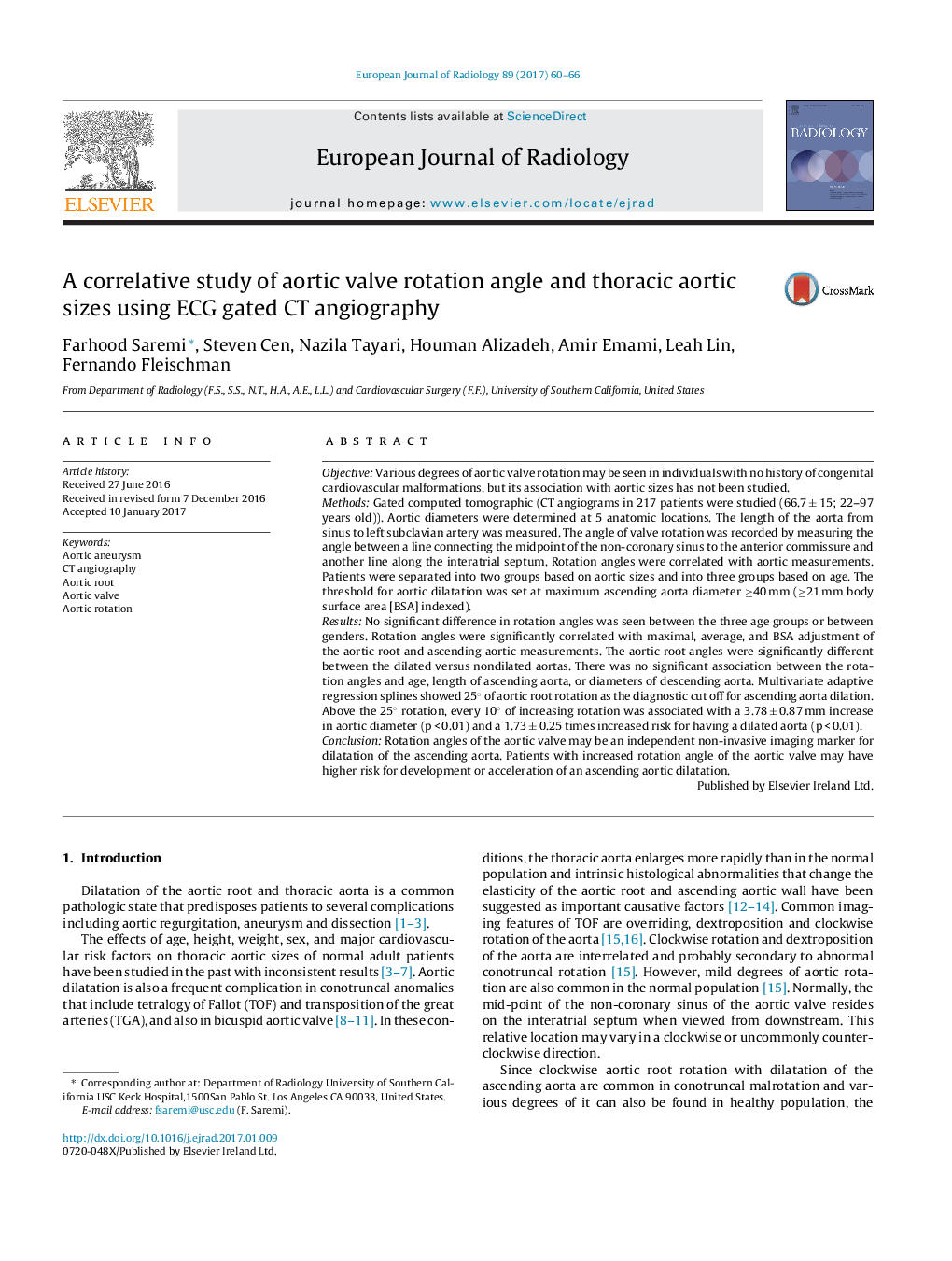| کد مقاله | کد نشریه | سال انتشار | مقاله انگلیسی | نسخه تمام متن |
|---|---|---|---|---|
| 5726373 | 1609731 | 2017 | 7 صفحه PDF | دانلود رایگان |

ObjectiveVarious degrees of aortic valve rotation may be seen in individuals with no history of congenital cardiovascular malformations, but its association with aortic sizes has not been studied.MethodsGated computed tomographic (CT angiograms in 217 patients were studied (66.7 ± 15; 22-97 years old)). Aortic diameters were determined at 5 anatomic locations. The length of the aorta from sinus to left subclavian artery was measured. The angle of valve rotation was recorded by measuring the angle between a line connecting the midpoint of the non-coronary sinus to the anterior commissure and another line along the interatrial septum. Rotation angles were correlated with aortic measurements. Patients were separated into two groups based on aortic sizes and into three groups based on age. The threshold for aortic dilatation was set at maximum ascending aorta diameter â¥40 mm (â¥21 mm body surface area [BSA] indexed).ResultsNo significant difference in rotation angles was seen between the three age groups or between genders. Rotation angles were significantly correlated with maximal, average, and BSA adjustment of the aortic root and ascending aortic measurements. The aortic root angles were significantly different between the dilated versus nondilated aortas. There was no significant association between the rotation angles and age, length of ascending aorta, or diameters of descending aorta. Multivariate adaptive regression splines showed 25° of aortic root rotation as the diagnostic cut off for ascending aorta dilation. Above the 25° rotation, every 10° of increasing rotation was associated with a 3.78 ± 0.87 mm increase in aortic diameter (p < 0.01) and a 1.73 ± 0.25 times increased risk for having a dilated aorta (p < 0.01).ConclusionRotation angles of the aortic valve may be an independent non-invasive imaging marker for dilatation of the ascending aorta. Patients with increased rotation angle of the aortic valve may have higher risk for development or acceleration of an ascending aortic dilatation.
Journal: European Journal of Radiology - Volume 89, April 2017, Pages 60-66